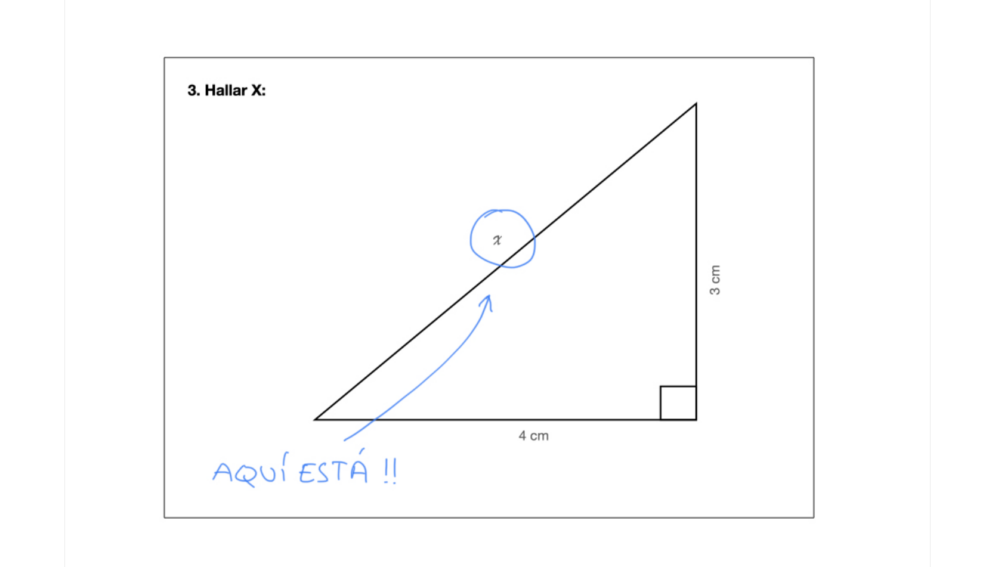ABSTRACT
If you want to innovate in retailing it is as important to find the solution as starting with the correct ideas or approaches.
If you do not have a profound understanding of your public your final outcome will be like playing lottery.
Moreover, trying to innovate within set boundaries and only researching the point of sale – neglecting that the purchasing process goes a lot further- will merely help to improve the existing. Hence, the store is the end point and not the starting point of innovation.
Chatting over dinner my brother told me one day: I’ve been sent an email with some terrible blunders made by highschool students. Take a look at this… He showed me the “corpus delicti” on his computer screen:
They were indeed absolutely hilarious. But after having a good laugh, I suddenly realised one obvious aspect: the students had in fact only answered the teacher’s question. They’d been asked to “find the X”. And they’d found it and pointed it out. So who deserved 0 marks, the students or the teacher?
This has happened to me a couple of times at ESADE: when setting an exam, the answers provided by several students showed me that a question had not been clearly formulated or was badly written.
.
Wrong question, wrong answer
The same thing could happen when trying to innovate in retailing based on incorrect inspirations or approaches. Here are some of the most common mistakes in the innovation process:
.
Relying only on new technology
If you try to base your innovation on a specific technology the result will be a lottery. For one simple reason: technology in itself is neither good nor bad, but might be right or wrong for a particular type of public.
Technology may help to convey a specific message that the store wants to get across, but some technologies are so intrusive (e.g. advertising slogans on shopping trolleys) that they may in fact create an irritating shopping experience.
Besides, if you do not start with a profound understanding of your public your final outcomes will be as certain as gambling in a lottery.
.
Basing what you do only on research at the point of sale
Some experts delve deeply the customer behaviour in stores, bringing in electronic methods or virtual reality to detect where customers look and what aisles they use. Later, they try to innovate based on their findings.
The current technologies for visualising customer behaviour are extraordinary, but only useful for improving what you already have. For instance, when improving the category management or optimising a shelf display.
One of the characteristics of innovation is that it transforms something existing. In fact, one of its aims in retailing is to help re-think the whole buying process.
While doing so we must not neglect current buying habits. However, we should also remember that a company can influence its customers by proposing a new way of shopping resulting in a higher quality of life.
.
Concentrating solely on what happens in the store
If your inspiration for innovation in the buying process focusses only on what happens in the store it won’t take you very far. The buying process starts at home, continuing on the way to the store, and even carrying on once left the premises.
Hence researching pre-and post-store conflict points can inspire innovative solutions.
.
Only considering customer opinions in a market study
When innovating, qualitative techniques are the best way to study your current or potential clientele. Rather than trying to innovate the typical surveys are ideal for improvements – for example when asking about things that the sample has experienced.
However, qualitative studies are not the universal remedy per se. A focus group could be ineffective if it only considers what the sample says. To innovate you must reach aspects submerged occasionally in the unconscious, and this requires the use of projective techniques.
.
Innovating within set boundaries
If the idea behind an innovation is to find something that will be applicable indifferently across different store formats, you are forgetting that the store (and everything it contains) is the product of any firm in retailing. In other words, the store must be the creation of a specific solution provided to a particular kind of public. In fact, it is the starting point and not the end point of innovation.
So it is not always the students who fail. Sometimes the “professors” start incorrectly!
.
Lluis Martinez-Ribes
Source: Distribución Actualidad, the spanish magazine of retail
(nº 412, January/February 2010)




